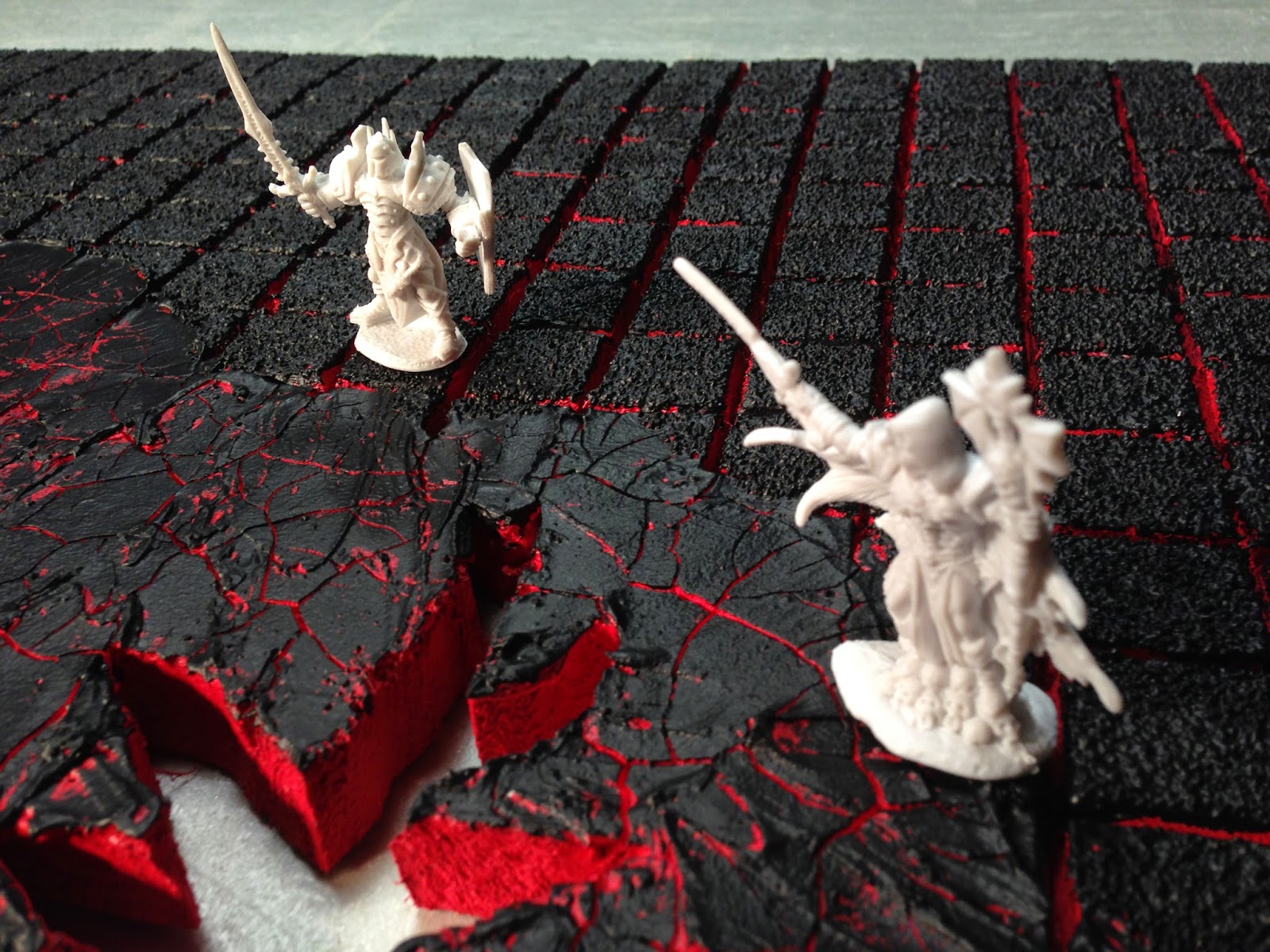Here is the basic layout I'm going for in this terrain piece. I have a 4'x8' sheet of 1" thick extruded polystyrene all cut up already and I think I like the way the hill is layed out. Polystyrene was cut with Hot Wire Foam Factory's 6" Hot Knife
Foam boards are glued together with Liquid Nails Panel & Foam Adhesive. I just stacked up some large heavy books on top, after the foam pins were set in place. Glued the Craters in place. Cut a hole in the middle of the board where the stairwell will go and glued into place. A little filler was needed to hide the seams. Primed the areas in white that are going to be painted red later.
The edges of the lava river are coated with Crackle Paste. I globbed it on really thick in order to get some nice deep fissures when it dries. Using paintable white caulk I created the lava itself.
Coated and sealed the boards gaps with paintable caulk.
I gave the board a coat of Elmer's glue watered down with Windex and applied the sand. The Crackle Paste is now dry but the fissures are not done cracking yet. The caulk for the lava needs a couple more days to cure.
It's been six days drying.... the lava is almost dry enough to paint. The Crackle Paste has made some great fissures and a nice textured base. Just have to carefully vacuum the extra sand that didn't adhere to the board.
Everything white gets painted red.
I can see a lot of motion in the lava river already!
Next, is to base the board black like lava rocks with the red showing through and then highlighted with orange, yellow and white.


























































































